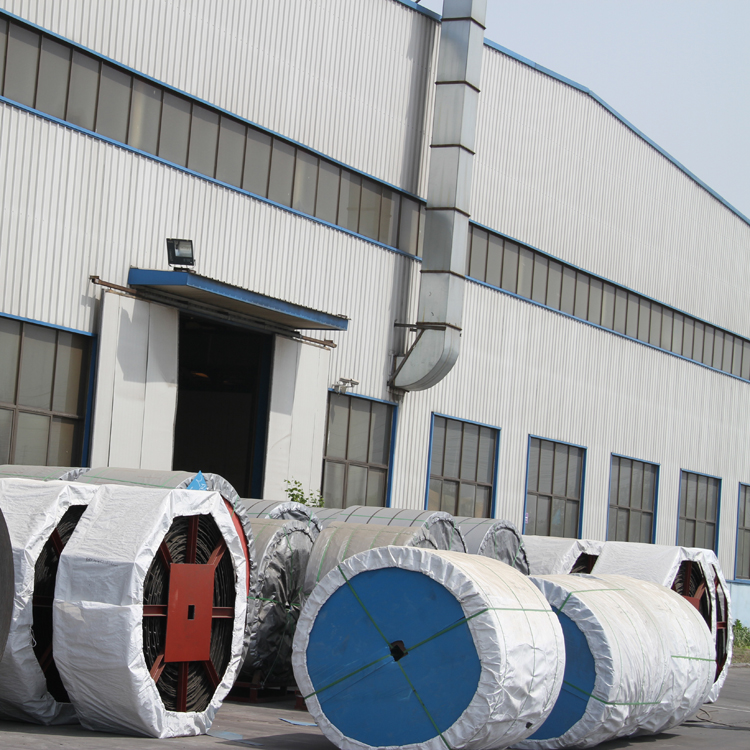Heat Resistant Conveyor Belt
Description

The heat resistance conveyor belt is made of the multilayer rubber cotton canvas ‘polyester cotton’ covered with the high temperature or heat resistant rubbers, which are bonded through high temperature vulcanization, it is applicable to conveying of the coke, cement, clinker and hot casting etc.
1、The heat resistance conveyor belt’s specification shall be identical with that of the conventional conveyor belt.
2、The heat resistance conveyor belt shall be in accordance with HG2297-92.
3、The heat resistant conveyor belt contains three types.
Type I; it is able to resist the test temperature of no more than 100℃, the max. short-time operating temperature is 150℃,the symbol is T1.
Type II; it is able to resist the test temperature of no more than 125℃, the max. short-time operating temperature is 170℃,the symbol is T2.
Type III; it is able to resist the test temperature of no more than 150℃, the max. short-time operating temperature is 200℃,the symbol is T3.
Type IV; it is able to resist the test temperature of no more than 175℃, the max. short-time operating temperature is 230℃,the symbol is T4.

2、The heat resistance conveyor belt physical property of the cover rubber after heat test shall conform to the values specified in the table.
|
Item
|
type
|
||||||
|
type I
|
type II
|
type III
|
|||||
|
variable range
|
|||||||
|
Hardness
|
Difference before and after ageing (IRHD)
|
|
±20
|
||||
|
Max. Value after ageing (IRHD)
|
85
|
||||||
|
Tensile strength
|
variable rate in performance ≤
|
25
|
30
|
40
|
|||
|
Min. value after ageing Mpa
|
12
|
10
|
5
|
||||
|
Rate of elongation at break
|
variable rate in performance% ≤
|
50
|
55
|
||||
|
Min. value after ageing
|
200
|
180
|
|||||
3、The heat resistance conveyor belt abrasive wear of the cover rubber
|
Type
Item
level
|
Abrasive wear
|
||
|
type I
|
type II
|
type III
|
|
|
First quality
|
0.8
|
1.0
|
1.0
|
|
accepts
|
1.0
|
1.2
|
1.2
|







Related Products
EP Conveyor Belt
NN conveyor Belt
CC Conveyor Belt
Steel Cord Conveyor Belt